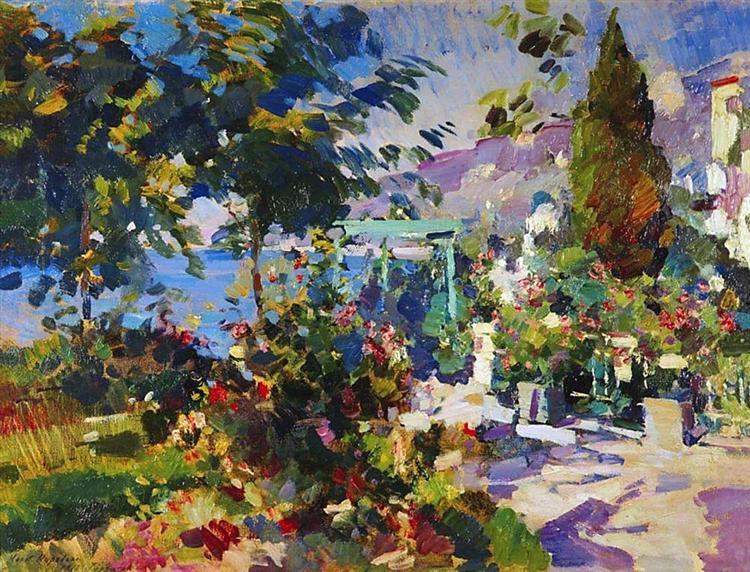Korovin – “Crimea. Gurzuf”
Painting by the remarkable Russian impressionist Konstantin Korovin “Crimea. Gurzuf “refers to the so-called” Crimean “period of the artist’s work. He loved to visit his dacha in the Crimea, where he felt extraordinary inspiration. It is known that the artist has several paintings dedicated to a small resort town called Gurzuf.
In the painting “Crimea. Gurzuf ”, which Korovin wrote in 1917, immediately strikes the eye with the riot of colors of the nature of the southern seaside town. It is written in the traditional manner of Korovin’s impressionism: wide, very bright strokes, from which, at close range, simply dazzle in the eyes. Therefore, it is better to consider it from a certain distance. Then she completely reveals her artistic merits to the viewer.
Compositionally, the diagonal is dominant in the picture. All elements and details are subordinated to it. The lower left corner of the canvas is occupied by a variegated grass carpet from which two trees grow. Their foliage is depicted with deliberate negligence, as if the warm southern wind prevented the artist from stopping the moment. The tree trunks stretching upwards add lightness and airiness to the picture. In the opposite, right side of the canvas, the artist depicted another tree, and all together they form a kind of frame for the picture, giving it a cozy and finished look. A sunlit path followed by the viewer’s gaze leads through an archway to the endless blue sea surface. Another diagonal is outlined by a purple mountain range, the image of which is parallel to the sandy path.
Bright and colorful colors transform the southern landscape into a kind of theatrical scenery. But this theatricality and staging does not in the least prevent you from enjoying the artistic impressions of Konstantin Korovin from the riot of colors of southern nature, depicted by the painter in the painting “Crimea. Gurzuf “.
Year of painting: 1917.
Painting dimensions: no data.
Material: canvas.
Writing technique: oil.
Genre: landscape.
Style: impressionism.
Gallery: no data.
